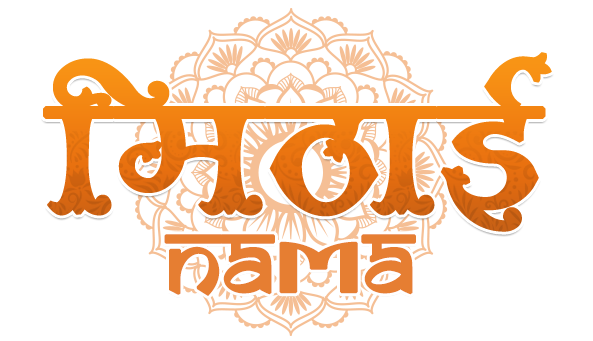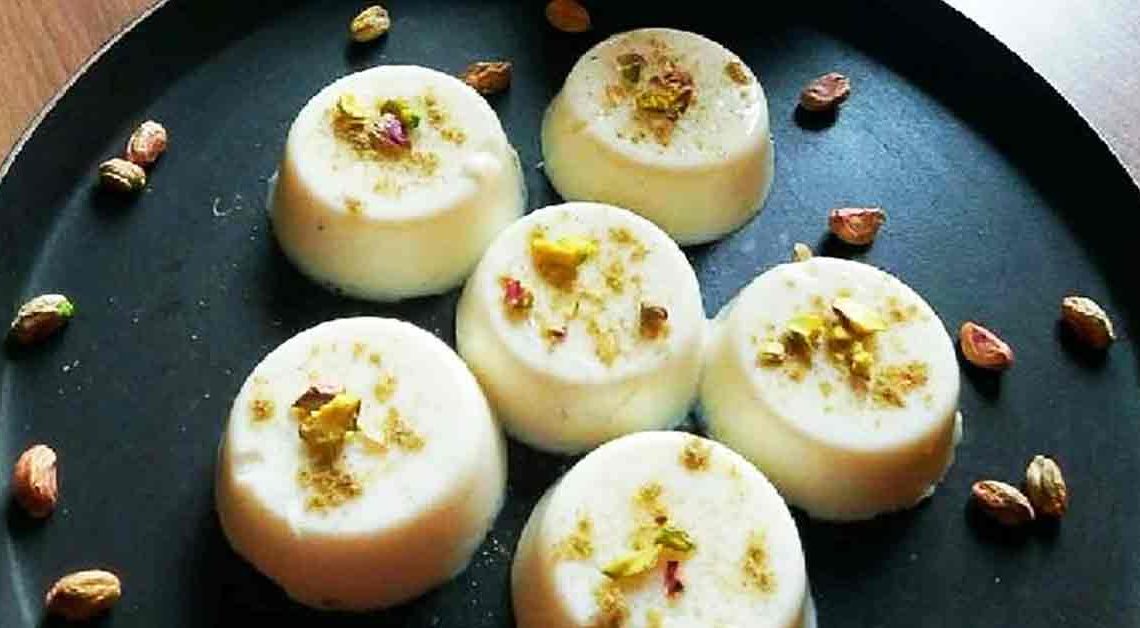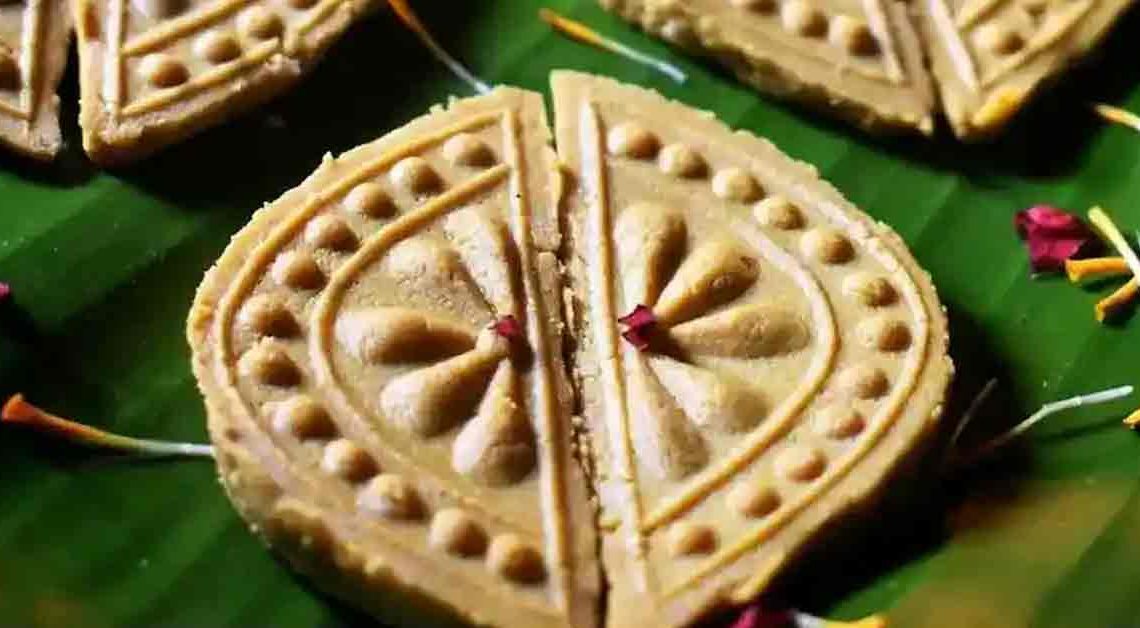Explore the Sweet Harmony of Jaggery-Coconut Laddu

Welcome to Mithainama that promises to tantalize your taste buds and transport you to the heart of India’s culinary heritage. Our destination today? The enchanting world of Jaggery-Coconut Laddu – a divine Indian sweet that strikes a harmonious balance between tradition and indulgence.
As you step into our culinary realm, prepare to be captivated by the rich history and cultural significance of Jaggery-Coconut Laddu. This timeless treat, crafted from the simplest of ingredients – jaggery, grated coconut, and a touch of aromatic cardamom – is not just a dessert; it’s a testament to the artistry of Indian sweets. Each laddu is a manifestation of love, tradition, and the sheer joy of savoring something sweet.
Let’s start rolling, roasting, and reveling in the world of luscious laddus!
Origin of Jaggery-Coconut-Laddu
Jaggery-Coconut Laddu, a delectable Indian sweet, has a fascinating origin deeply rooted in the country’s culinary traditions. This sweet delight can be traced back to ancient India, where it was not just a treat but a symbol of cultural heritage.
Jaggery, a key ingredient in this dessert, has been used for centuries in India. It is an unrefined sugar product made from sugarcane or date palm sap. Its history dates back to the Indus Valley Civilization, around 2500 BCE, making it one of the oldest sweeteners known to humankind.
Coconut, another fundamental component of the laddu, has been cultivated in India for over 3,000 years. Coconut has played an integral role in Indian cuisine, providing flavor, texture, and nutrition.
The fusion of jaggery and coconut into laddu form is believed to have evolved over centuries in different regions of India. Each region brings its own unique twist to the recipe. For instance, in South India, the laddus are often flavored with cardamom or even sesame seeds, while in the northern parts of India, they might include ingredients like dry fruits or poppy seeds.
History of Jaggery-Coconut-Laddu
The history is a popular Indian sweet, is a tale that weaves together ancient traditions, regional influences, and culinary creativity.
Jaggery, one of the main ingredients in this sweet, has a history dating back thousands of years in India. It is believed to have been used in the Indian subcontinent since the time of the Indus Valley Civilization, around 2500 BCE. Jaggery was initially created as a way to preserve the sweetness of sugarcane juice.
Coconut, the other primary component of Jaggery-Coconut Laddu, has been cultivated in India for over 3,000 years. It has been an integral part of Indian cuisine, providing both flavor and nutrition. The use of coconut in sweets is well-documented throughout India’s culinary history.
Laddus, in general, hold significant cultural importance in India. They are often offered in religious rituals, festivals, and celebrations, symbolizing sweetness, good luck, and prosperity. Jaggery-Coconut Laddu is no exception and has become a cherished part of various cultural and religious traditions.
Cultural Significance
Jaggery-Coconut Laddu holds significant cultural importance in India, as it is not just a sweet treat but a symbol of tradition, celebration, and the country’s rich cultural heritage. Here are some aspects of its cultural significance:
Religious Offerings: Laddus, including Jaggery-Coconut Laddu, are often offered as prasad (sacred food) in Hindu temples during religious ceremonies and festivals. The sweet and fragrant laddus are considered a symbol of divine blessings and are distributed among devotees as a token of religious sanctity.
Marriage and Rituals: Laddus are a common part of Indian weddings and other auspicious ceremonies. They are exchanged as a sign of well wishes and happiness. In some customs, laddus are even used during traditional rituals, such as engagement or puja ceremonies.
Symbol of Hospitality: Offering sweets, including laddus, to guests is a long-standing tradition in India. It is a symbol of hospitality, warmth, and respect for visitors. Jaggery-Coconut Laddus are often prepared and served to guests on various occasions as a way of showing hospitality and love.
Where is Jaggery-Coconut-Laddu Famous?
Jaggery-Coconut Laddu is famous and cherished throughout India. It is a popular sweet that enjoys widespread popularity in various regions and states across the country. Here are some of the places where it is particularly famous:
Southern India: Jaggery-Coconut Laddu is especially popular in the southern states of India, including Kerala, Tamil Nadu, Karnataka, and Andhra Pradesh. In these regions, it is often prepared with fresh coconut, cardamom, and jaggery, giving it a distinct South Indian flavor.
Maharashtra: In Maharashtra, Jaggery-Coconut Laddu is known as “Nariyal-Gur Ladoo.” It is a common sweet prepared during festivals like Ganesh Chaturthi and Diwali. Maharashtrian cuisine features various regional variations of this sweet.
Gujarat: In Gujarat, it is known as “Gol Papdi” or “Sukhdi,” and it is a traditional sweet made with jaggery, ghee, and wheat flour. While it may have slight variations in ingredients compared to the coconut-based laddu, it is equally beloved in the region.
Interesting Facts and Trivia
Jaggery-Coconut Laddu is a delightful Indian sweet with a rich history and cultural significance. Here are some interesting facts and trivia related to this sweet treat:
- Both jaggery and coconut are considered to have health benefits in Ayurveda, the traditional Indian system of medicine. Jaggery is believed to aid digestion and boost immunity, while coconut is valued for its nourishing properties.
- While the basic ingredients remain the same, Jaggery-Coconut Laddu has regional variations in India. For example, in South India, it is often flavored with cardamom, while in the North, it might include ingredients like poppy seeds or dry fruits.
- While store-bought laddus are readily available, many families take pride in preparing it at home, passing down recipes and techniques through generations.
- Traditional Jaggery-Coconut Laddu recipes are vegan-friendly since they use plant-based ingredients—coconut and jaggery—and do not contain dairy products.
- These are often served on special occasions and gatherings, wrapped in betel leaves or banana leaves, adding an earthy aroma to the sweet treat.
Did You Know?
Did you know that Jaggery-Coconut Laddu, besides being a delicious treat, offers several health benefits when consumed in moderation?
- Jaggery, a primary ingredient in these laddus, is packed with essential minerals like iron, magnesium, and potassium. Coconut adds dietary fiber and healthy fats, making this sweet a nutrient-rich indulgence.
- The combination of jaggery and coconut provides a quick energy boost due to their natural sugars. It’s an excellent choice for a natural energy source, especially during festive celebrations or after physical activity.
- Jaggery is known to stimulate digestive enzymes, promoting better digestion. Consuming Jaggery-Coconut Laddu in moderation may help alleviate digestive discomfort.
- Jaggery is a good source of iron, making it a valuable addition to the diet, particularly for individuals with iron-deficiency anemia. It can help increase hemoglobin levels and combat fatigue.
- Some believe that jaggery can help detoxify the liver by flushing out harmful toxins from the body.







